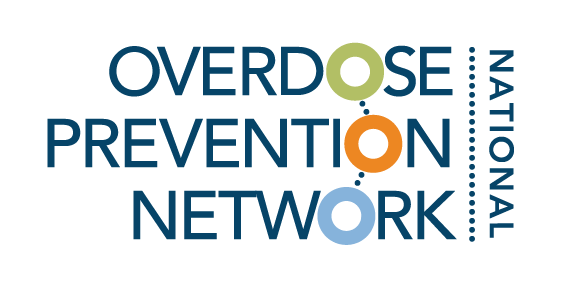
Resource Library
Toolkits, guides, and other resources vetted by experts in overdose prevention.
Filter by category and tags, or search by keyword (ex. COVID-19, harm reduction).
Summary Brief of Towards Equity-Driven Whole Child Health and Wellness
This brief provides a condensed version of the guide created with Youth Opioid Response California and California AfterSchool Network, to provide information on various strategies co-designed across sectors to support substance use prevention and creating hubs at schools and other community sites to promote whole child, whole family, and whole community health and wellbeing.
California’s Golden Opportunity Post-Convening Update & Materials
On Friday, September 16, 2022, the California AfterSchool Network (CAN) successfully convened CA practitioners and educators in California’s Golden Opportunity: Promoting Child & Community Wellness Through Cross-Sector Expanded Learning Partnerships event. This culminating virtual event of the Whole Child Health & Wellness Community of Practice, was funded by Youth Opioid Response (YOR) California. The purpose of the virtual event was to create awareness about California’s Golden Opportunity for multi-sector partnerships with California’s Expanded Learning Programs that promote health, and mental health, and increase access to substance use intervention and treatment for children, youth, and families. Resources from the convening can be found here.
California AfterSchool Network
"The California AfterSchool Network (CAN) is an organization that exists to make a difference in the health and well-being of children, youth, their families, and their communities by strengthening access to high-quality Out-of-School Time (OST) programs.
Statewide System of Support for Expanded Learning
California has a system of support for expanded learning (SSEL). This webpage has the most current contacts for each region in California.
Fentanyl Awareness Pamphlet in Spanish
The Butte Glenn Opioid Safety Coalition created a pamphlet that highlights fentanyl awareness and resources.
Fentanyl Awareness Pamphlet in English
The Butte Glenn Opioid Safety coalition created a pamphlet that highlights fentanyl awareness and resources.
Towards Equity-Driven Whole Child Health and Wellness
This brief provides a condensed version of the guide created with Youth Opioid Response California and California AfterSchool Network, to provide information on various strategies co-designed across sectors to support substance use prevention and creating hubs at schools and other community sites to promote whole child, whole family, and whole community health and wellbeing.
California's Golden Opportunity
In this blog post by Jeff Davis, the Executive Director of California AfterSchool Network, speaks on the opportunities to partner with expanded learning programs in California to support the whole child, whole family, and community wellness.
Public Safety-Led Community-Oriented Overdose Prevention Efforts (PS-COPE) Concept Paper
This PS-COPE Concept Paper is a new approach to community-oriented overdose prevention and response in Black, Indigenous, and People of Color (BIPOC) Communities. It is a supplemental resource that describes the cross-cutting principles of trauma-informed, recovery-oriented, procedurally just and PS-COPE approaches, and how each of these frameworks brings unique value to working within BIPOC communities.
Public Safety-Led Community-Oriented Overdose Prevention Efforts (PS-COPE) Toolkit
The Public Safety-led Community-oriented Overdose Prevention Efforts (PS-COPE) Toolkit is a new approach to overdose prevention and response for Black, Indigenous and people of color (BIPOC) communities. It combines three proven models to enhance overdose prevention and response: trauma-informed care, recovery-oriented systems of care and procedural justice.
School-Based Harm Reduction with Adolescents: A Pilot Study
This journal article reviews the impact of a pilot study on the use of the Safety First real drug education with high school freshman and these findings had significant implications on reductions of overall substance use and increase in harm reduction in these freshman students.
Trauma-Informed Approaches Toolkit
This toolkit is intended to provide foundational information, language, and an introduction to tools and assessments for agencies and providers, both those who provide direct services and funders.
A Game Changer for Street Medicine: Key Takeaways from New Medi-Cal Guidelines
This issue brief lays out the major implications of this new guidance, along with key issues that remain, and is designed for clinical professionals and others who operate street medicine programs or are interested in creating new programs.
About Naloxone/Narcan + Instructions (Spanish Version)
This video is in Spanish and is an animated naloxone training and informational video that OD Free Marin created for sharing with community members to provide information on naloxone and responding to an overdose.
About Naloxone/Narcan + Instructions
This video is an animated naloxone training and informational video that OD Free Marin created for sharing with community members to provide information on naloxone and responding to an overdose.
What is fentanyl? Spanish PDF
This flyer created by Prescribe Safe Monterey County is translated into Spanish providing advice around fentanyl, its potency, and harm reduction safety tips.
MAT Treatment for Pregnant Women Flyers
This flyer is an example of a resource created by Sacramento County Opioid Coalition and is available in both English and Spanish. This resource is made available for use in clinics and offices.
The 2022 National Healthcare Quality and Disparities Report: We Still Have Much Work to Do
How is the US really doing on health care? Knowing the current trends is key to our work, and this annual report from the Agency for Healthcare Research and Quality (AHRQ) is the essential guide.
Four Data Driven Harm Reduction Strategies in Overdose Prevention
What steps can communities take to engage youth in overdose prevention? The following summary provides concrete examples of data-driven strategies to address rising rates of overdose among youth. Case studies were drawn from overdose prevention coalitions participating in the California Overdose Prevention Network (COPN) Accelerator 3.0 Program. These can serve as models for other coalitions and organizations across the country.
Four Data Driven Strategies to Engage Youth in Overdose Prevention
What steps can communities take to engage youth in overdose prevention? The following summary provides concrete examples of data-driven strategies to address rising rates of overdose among youth. Case studies were drawn from overdose prevention coalitions participating in the California Overdose Prevention Network (COPN) Accelerator 3.0 Program. These can serve as models for other coalitions and organizations across the country.









